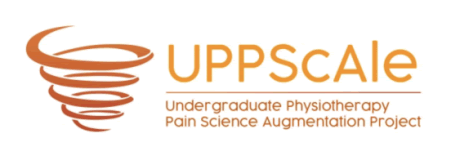




Lecture 1
Evidence based management of low back pain including stratified care (PDF)
Lecture time: 22:41 minutes
This lecture presents an overview of the prevalence of low back pain and evidenced based prevention and treatment approaches. Managing low back pain using a stratified care approach (StartBack tool) will be discussed and participants will acquire an understanding of utilising this prognostic screening tool and matched treatment approach.
Lecture 2
Lecture time: 30:55 minutes
This lecture presents an overview of the importance of therapeutic communication with patients including various strategies that can be used. It also explains how spoken / written words influence patients' understanding of chronic pain and has a significant impact on the clinical outcome. Finally it outlines how the semantic and emotional impact of the words used by patients to describe their pain may improve its assessment.
Lecture 3
Lecture time: 31:23 minutes
This lecture presents an overview of the classes of medications used in pain treatment (acetaminophen, nonsteroidal anti-inflammatory drugs, antidepressants, antiepileptics, local anaesthetics, and opioids). This includes the indications, actions, and contraindications for all the drug classes.
Lecture 4
Lecture time: 24:11 minutes
This lecture presents how patients perceive their injuries, disabilities, pain, and make sense of what is happening to them. It is important that this is explained within a biopsychosocial model. It discusses how the choice of the words clinicians use is important in the delivery of healthcare, where a misunderstood word can undermine treatment and create unnecessary stress. By understanding and using the principles of good communication the message we intend is the message patients receive.
Lecture 5
PPTX. presentation file
Download presentation file here.
Lecture time: -
This lecture presents what health literacy is, and how much of an issue it is within Europe, and how it relates to pain.
MCQ included.
Lecture 6
Lecture time: 19:01 minutes
The lecture provides a comprehensive overview of the critical connection between mental health and overall well-being, emphasizing the inability to achieve true health without mental stability. Participants will gain an understanding of the relationship between pain, mental health, and maladaptive cognitions, and how these factors can influence therapeutic outcomes. The session highlights the multidimensional nature of pain, incorporating behavioural and cognitive perspectives, and underscores the importance of biopsychosocial assessments in physical therapy treatment. Educational strategies and communication techniques to promote patient self-management and motivation are also discussed. The content is designed to be accessible without prior preparation, ensuring participants from various backgrounds can engage with and benefit from the material presented.
Lecture 7
Physiotherapy pain management in patients with chronic pain (PDF)
Lecture time: 23:53 minutes
This lecture presents how to manage patients with chronic back pain, using a case study.
MCQ included.
Lecture 8
Challenges in connecting with the patient with chronic pain (PDF)
Lecture time: 77:15 minutes
This lecture presents the factors that challenge effective patient-physiotherapist working alliance, and that can hinder physiotherapists management of people with chronic pain. Some cases and possible solutions will be presented and discussed.
Lecture 9
Lecture time: 30:44 minutes
This lecture presents the evidence regarding benefits of physical activity and exercise and the optimal dose for pain management. It will consider the challenges of prescribing exercise for people living with pain, outline pre-exercise screening guidelines, and discuss goal setting in terms of choosing target programme outcomes. Special considerations for exercise prescription for specific pain populations will also be highlighted.
Lecture 10
Lecture time: 35:17 minutes
This lecture presents an overview of the range of electrotherapy treatment approaches that may be utilised in the management of acute and chronic pain. The efficacy, indications and contra-indications are summarised and mechanisms of action discussed.